Gumang Temple
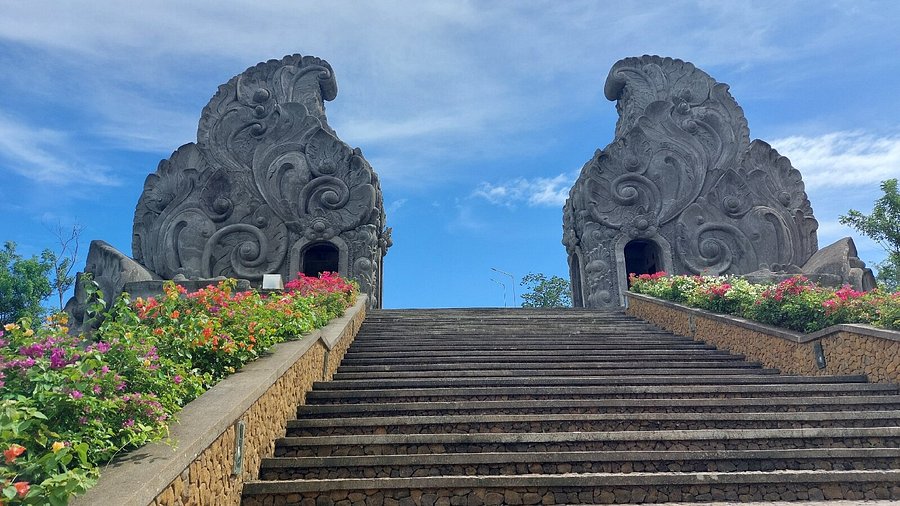
A Sacred Hilltop Temple in East Bali
Located in the serene and relatively untouched region of East Bali, Pura Gumang is a sacred temple that holds great spiritual significance for the local Hindu community. Nestled atop a lush green hill in Desa Adat Bugbug, Karangasem Regency, this temple is not only a place of worship but also a historical and cultural site with rich traditions and a deep connection to Balinese cosmology.
Overview and Religious Significance
Pura Gumang is considered a Pura Kahyangan Jagat, which refers to a group of temples that are essential to the spiritual balance of the island. Specifically, Pura Gumang is often associated with Mount Lempuyang and the energy of Dewa Pasupati, the deity believed to reside in high places and mountains. The temple serves as a spiritual guardian for the eastern region of Bali.
Balinese Hindus believe that visiting Pura Gumang is part of the Tirta Yatra pilgrimage, a journey undertaken to purify the soul and gain spiritual merit. The temple is a site for major ceremonies during religious festivals such as Purnama (full moon), Galungan, Kuningan, and Piodalan (temple anniversary), when thousands of devotees climb the hill to offer prayers and bring elaborate offerings.
Location and Access
Pura Gumang is situated in the village of Bugbug, about 15 kilometers from Amlapura, the capital city of Karangasem Regency. The base of the hike is accessible by vehicle, but visitors must complete the final part of the journey on foot.
To reach the temple, visitors must hike up a forested hill via a well-worn path that winds through agricultural terraces, bamboo groves, and tropical vegetation. The hike takes approximately 30 to 45 minutes, depending on physical fitness and weather conditions. The trail is moderately challenging, with uneven stone steps and occasional steep inclines.
Historical and Cultural Background
Pura Gumang is one of the oldest temples in East Bali. While the exact age of the temple is not documented, it is believed to have been established centuries ago as part of Bali’s ancient spiritual geography. Oral traditions passed down through generations suggest that the temple played a vital role in early Balinese ritual networks, especially in the east, where nature-based spirituality and ancestor worship were central.
The temple’s isolated location reflects its historical function as a site for tapa (meditation) and moksa (spiritual liberation). Priests, hermits, and spiritual seekers have long used the temple as a place for deep reflection and prayer, removed from the distractions of the outside world.
Temple Architecture and Layout
Pura Gumang’s architecture is typical of Balinese hill temples, modest in size but rich in symbolism. The complex features:
- Candi bentar (split gateway) as the entrance
- Several meru (multi-tiered shrines) dedicated to various deities
- Bale pelinggih (pavilions) for offerings and ceremonies
- Sacred stones and natural rock formations believed to hold spiritual energy
Unlike more ornate temples found in southern Bali, Pura Gumang blends seamlessly with its natural surroundings. The layout follows Balinese cosmic principles, aligning structures with sacred mountains, cardinal directions, and spiritual energies.
Spiritual Atmosphere and Scenic Views
The atmosphere at Pura Gumang is quiet and solemn, especially outside of major festivals. Surrounded by dense forest and open skies, the temple offers panoramic views of Mount Agung, the Bali Sea, and the rolling hills of East Bali.
Visitors often describe a sense of peace and spiritual elevation upon reaching the temple. The absence of crowds and commercialism makes Pura Gumang an ideal place for meditation, reflection, and a deeper connection to Balinese spirituality.
Practical Tips for Visitors
- Dress appropriately: Visitors must wear a sarong and sash. These can be rented at the entrance or brought from home.
- Hire a local guide: A guide can provide insight into the temple’s history, rituals, and significance, and assist with navigating the hike.
- Start early: Morning visits are recommended to avoid the midday heat and to enjoy better visibility.
- Bring water and wear proper footwear: The trail can be steep and slippery in parts, especially during the rainy season.
- Respect religious practices: Refrain from entering sacred areas during ceremonies unless invited, and avoid loud or disrespectful behavior.
Nearby Attractions
Visitors can combine a trip to Pura Gumang with other cultural and natural attractions in East Bali, such as:
- Taman Ujung Water Palace
- Tirta Gangga Royal Water Garden
- Virgin Beach (Pantai Perasi)
- Lempuyang Temple (Pura Luhur Lempuyang)
These sites offer additional opportunities to explore the rich heritage and natural beauty of the region.
Conclusion
Pura Gumang remains one of Bali’s hidden spiritual gems. Far from the tourist crowds and commercial centers, the temple offers a genuine experience of Balinese Hindu culture, nature, and devotion. Whether you are on a pilgrimage or simply seeking a quiet place with meaningful history and breathtaking views, Pura Gumang is a destination worth discovering.


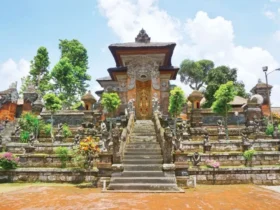
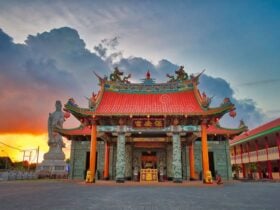
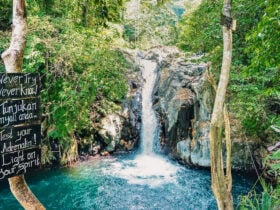




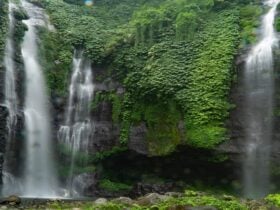
Leave a Review